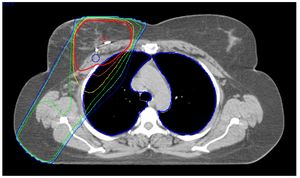A catastrophic midair collision between an American Airlines passenger jet and a Black Hawk helicopter on January 29, 2025, near Washington D.C. has left the nation grappling with the loss of all 67 people onboard.
According to the National Transportation Safety Board (NTSB), the tragic incident occurred shortly before 9 p.m. near Ronald Reagan Washington National Airport, resulting in the devastating destruction of both aircraft. All passenger and crew members aboard the American Airlines jet, flight 5342 from Wichita, Kansas, and the three soldiers on the helicopter were presumed dead.
The recovery efforts have been extensive, with at least 41 bodies already retrieved from the Potomac River as teams work tirelessly to recover the remaining victims. The identities of the deceased are slowly being made public, adding heartbreaking dimensions to each loss. Among the victims are two teenage figure skating stars, their parents, two coaches, and both pilots of the American Airlines jet, Captain Jonathan Campos and First Officer Sam Lilley.
Notably, two soldiers from the helicopter were identified as Staff Sgt. Ryan Austin O’Hara and Chief Warrant Officer 2 Andrew Eaves, with the identity of the third service member withheld at the family’s request. O’Hara’s body was recovered earlier this week, and authorities are still searching for Eaves.
The tragedy raised immediate alarms about aviation safety, particularly around helicopter operations near one of the busiest airports. Following the crash, the Federal Aviation Administration (FAA) swiftly imposed restrictions on helicopter traffic to help safeguard the airspace around Ronald Reagan Airport. “Today’s decision will immediately help secure the airspace near Reagan Airport, ensuring the safety of airplane and helicopter traffic,” said Transportation Secretary Sean Duffy.
Investigations are underway, with authorities recovering three black boxes from the wreckage. The NTSB confirmed the retrieval of one black box from the Black Hawk helicopter, along with two others from the American Airlines jet. NTSB board member Todd A. Friedman expressed optimism for information retrieval, stating, “We have a high level of confidence we will be able to have a full extraction.”
The investigation is delving deep to understand the circumstances of the crash. Witness accounts and air traffic control communications are being thoroughly reviewed, particularly concerning controller staffing. Reports indicate only one air traffic controller was on duty during the fatal incident, responsible for overseeing both airline and helicopter traffic. This situation has raised significant concerns, particularly since air traffic at Reagan National typically requires the attention of two controllers.
Friedman stated, “The NTSB is focused on finding the facts to make sure this tragedy never happens again.” He emphasized the determination to not engage in speculation until the full facts and data are available.
The day following the incident, another plane had to abort its landing at Reagan National due to helicopter traffic, sparking more concerns about the safety protocols surrounding helicopter operations and their potential impact on commercial airline safety.
Meanwhile, the personal toll of the crash continues to resonate deeply, with online campaigns raising nearly half a million dollars for the families affected. A GoFundMe hub has been established to assist the grieving families, with significant contributions pouring from across the community.
Aside from recovery efforts and financial support, the incident sparked political debates. Former President Donald Trump made controversial remarks linking diversity, equity, and inclusion (DEI) programs to the crash. This led to backlash, particularly against Jo Ellis, the transgender Black Hawk pilot who was falsely implicated as being the crew member responsible for the incident. Ellis took to social media to clarify her role, stating, “It is insulting to the families to try to tie this to some sort of political agenda.”
The actions and rhetoric following the crash highlight the interplay of politics, accountability, and safety standards within aviation. The FAA has been facing criticism about its staffing levels, with approximately 3,000 controllers short of staffing targets. These issues were emphasized by concerns from multiple parties about ensuring safe air travel.
Elaborate calls for change and safety reassurances came from federal officials. “Passengers should be assured flying is still the safest mode of transport,” stated Duffy, aiming to regain public confidence following the traumatic event.
Investigators stress the importance of clarity and thoroughness as they proceed with recovering additional bodies, analyzing black box data, and determining the real causes behind this disaster. With so many lives lost and families affected, there is both urgency and necessity for answers.
The human cost of the Washington D.C. collision is not merely statistics but names and stories intertwining lives lost too soon. Every victim has left behind family and friends who must now navigate through grief, uncertainty, and calls for justice and reform as the investigations continue. Authorities have ensured families of the victims are briefed and supported through this painful process.
Moving forward, the key takeaway from this tragic disaster emerges as not just about improving air traffic management but about valuing the lives affected and learning from the heart-wrenching lessons offered. The investigations will play a pivotal role not only for accountability but also for enhancing future safety measures across aviation.



